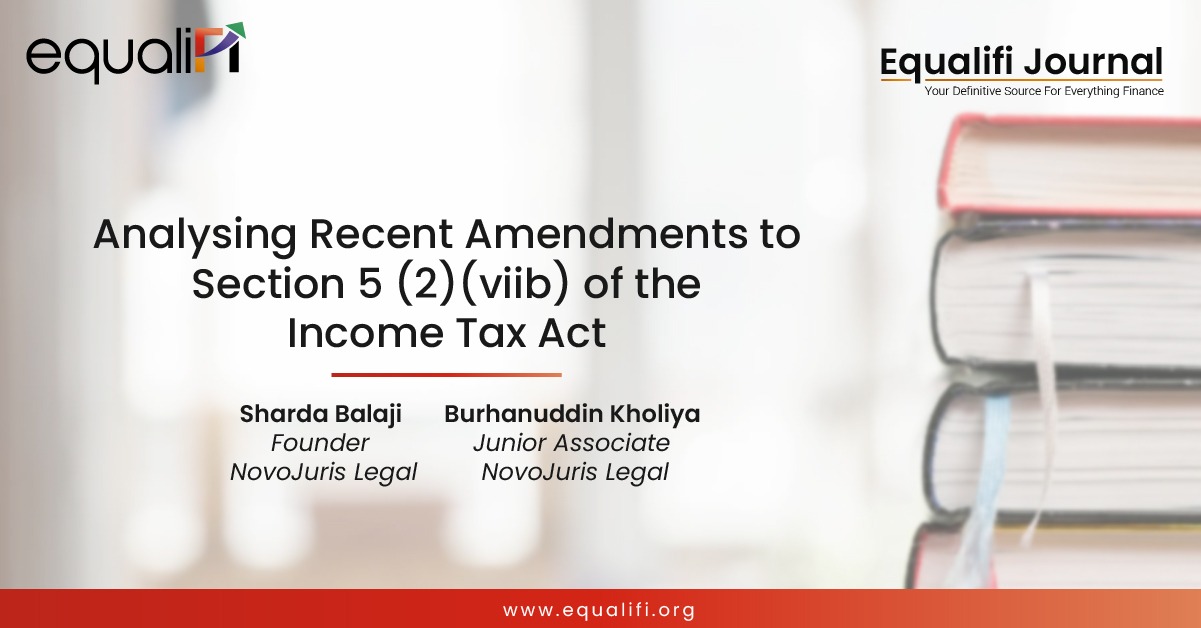A Case Study on Impact of Social Media platform for Banks in promoting different banking products
Posted on: March 23, 2022 | By: Rajat Mehrotra, Assistant Professor RBMI Group of Institutions Bareilly
- Purpose/Objectivity: The present study focuses on to analyze the penetration of different products- RD, FD, Insurance, mutual funds, credit & debit cards, demat account and how it impacts in saving and investment decision of potential customers and to identify the factors which influence the investor’s decision and to identify the preferred investment option.
- Research Design/methodology/Approach: The study is descriptive in nature. Population for selecting sampling units of the study includes the customers of Bareilly and Dehradun. The source of data collection is primary in nature. For collecting data from the sample respondents, the questionnaire was used. Practical Implications: Implications of the findings of the study will be to discuss the investment pattern of different customers while selecting the different banking products. To study an investor’s psychology related to analyzing the different investment avenues in the Indian Banking and how to take a final decision in terms of selecting the best possible product. The study will also analyze the behavior of customers and analyze how the customers is being satisfied by the products delivered by the banking institutions and the customer satisfaction level by achieving the monetary and non-monetary rewards to attain the desired banking product by understanding the product, risk analysis, product comparison, linkage with individual customer requirements, time period of banking product are some of the common factors which together with a customer’s requirements in life, spending habits, expenses, income, perception towards product, lifestyle changes, time period, nature towards investment, thought process, natural habits, study of one’s financials, risk bearing capacity, liquidity, expected return and linking of the banking products with the goals, the understanding of the customers objective in line with one’s goals should be analyzed in detail.
Originality/value: The research paper is an original work based on primary data gathered from the respondents of Uttar Pradesh and Dehradun. The secondary data will support in ascertaining the comprehensive views towards investment pattern of customers in different banking products.
Keywords: Banking products, Facebook, Twitter, whatsapp, instagram, Credit Cards.
Introduction
The face of banking is changing very rapidly in a changing World particularly when it comes to Indian banking. With the issuance of new banking licences by the Reserve Bank of India, the Indian banking is becoming more competitive with more players entered into the Indian Banking space with diverse range of products, customer needs, different types of customers, different set of the requirements of customers, mediums of distribution of services put in place a very important medium which will help banks reach the large number of customers within a very short span of time or we can say instantly in a cost effective way is through Social Media. Social media platforms not only create awareness but also will well inform the customers about the different new and innovative ways of banking. But merely following or dependent on social media platform will not work alone rather it should be used in a way as it should benefit the end customer in a timely manner. Time and cost are the two major drivers which make the emergence of social media entered into the Indian Banking space. Digital transformation is the need of the hour. The Indian banking is changing its face from the traditional manual banking to automated banking, core banking, ATMs, E-lobby passbook printing, cheque book request kiosks, SMS banking, tele and phone banking are some of the mediums of exchanging the information digitally. The new gen tech savvy generation may not want to waste time visiting bank branches rather they prefer to do banking at their convenience. With the emergence of smart phones, the strong infrastructure connectivity in rural as well as urban areas and the GOI initiative of learning and development in making the citizens of India financially inclusive the different social media platforms like Facebook, twitter, instagram, etc. are among the popular mediums used by customers in accessing the banking services at ease. In the late 90s, cheque and cash were the two prominent modes of payment options widely preferred in Indian banking but now in 21st century and particularly after 2014, the major transactions done are the mobile phones, through SMS, through miss call, on mobile wallets to name a few.
Review of Literature
Cognizant 20-20 Insights-How banks can use social media analytics to drive business advantage, New Jersey, 2014 Social media is dramatically impacting the banking industry, as most banks have established a presence on various social sites. Barclays Bank, Citigroup, Inc., HSBC, NatWest and others all engage on social media through Twitter, Facebook, Google+, LinkedIn, etc. J. P. Morgan’s customer service account alone has more than 26,000 followers on Twitter, and the company has sent more than 90,000 tweets since its inception.But followers and interactions are only as good as the meaning that can be distilled from them. As customers increasingly use social media to share opinions on financial products and services, banks must listen, learn and respond, as well as incorporate their social activities into their overall corporate strategies. In most cases, this requires banks to rethink their core business strategies to make them more customer-centric.
Traditionally, banks have employed a “push” strategy to communicate their offerings to customers, through advertising, direct mail, point-of-sale displays or face-to-face interactions. However, the industry focus has shifted from “customer service” to “customer engagement,” which requires a two-way mode of communication. To sharpen their engagement capabilities, banks need to enhance their understanding of customers by using social analytics to gain deep insights into customer behaviour, sentiments and needs.
KPMG-The social banker v2.0, UK, 2013 In the beginning, the bank focused its social media strategy on customer service and engagement. Even today, the bank sees social media as an opportunity to ask itself a simple question: what do customers – and prospective customers – really want from their bank? The results have helped the to define strategies and make decisions such as where to place new ATMs, the roll-out of e-branches and even the placement of a full-service branch. In a country where communicating important messages to a wide audience is often difficult, social media has also helped the bank identify and communicate enhancements and problems with its products and services. In 2012, when part of the bank’s internet functionality was down (due to security system upgrades) customer’s flooded social media with questions and comments. In short order, the social media team was able to monitor the issue, alert executives to the problem and then work with stakeholders across the organization to communicate the issue – and proposed resolutions – to customers.
American banker Association research study- The state of social media in Banking, ABA, Washington DC, 2017 For most banks (75%), social media strategy and content are managed by the marketing director or vice president. One bank in five assigns this responsibility to someone else, such as a manager in marketing, IT or compliance. Only 10 percent of banks turn to an outside marketing firm, in part because of fears that external agencies might not be well versed in the compliance issues. More than one-third of respondents in the survey (36%) said client-facing employees (such as personal bankers, loan officers and financial advisors) are not allowed to use social media for business purposes.
Another 28% said employees can post, but the rules are unclear, while 26% said employees are encouraged to post and the bank provides social media training to employees
- Social media is a powerful way to boost the brand. Even small banks have raised their profiles to thousands of likes and tens of thousands of views with community-minded posts and viral videos. 2. Social media programs are still maturing. Most banks have been in social media for only a few years, while many are just starting. Of those who are in, a large percentage are not using it very actively yet. 3. There’s a lot of work to be done in strategy and implementation. Only a small number of banks have established clear plans, goals, governance and training programs for their use of social media. 4. Banks are foregoing opportunities. About one-quarter of banks have no plans to use social media for managing complaints, customer service or recruiting—areas where other banks are seeing notable successes. 5. Giving employees a voice can be a great benefit. The risks of expanding employee advocacy can be mitigated by providing preapproved content, strong policy and good training. 6. Governance concerns can be resolved with management software. About half of banks use software or technology from a third-party provider to help monitor or manage social media content or compliance
Objective of Study:
- To analyze the impact of social media platform for banks.
- To analyze the awareness of different customers in availing banking products through social media platform.
- To analyze the importance of social media platform and there synergy with different banking institutions.
- To analyze the frequency of usage of social media platforms in availing banking products and their satisfaction level.
Research Methodology
In our research we used the questionnaire method of data collection with closed ended questionnaire from the various respondents – doctors, CAs, Bankers, Business persons,teachers, professors, govt. servants, students, retired presons residing in the cities of Bareilly and Dehradun who have participated in the research has been analyzed with the help of percentage analysis and bar graph. The questionnaires were filled by 510 respondents.
Findings of the Study
- The study indicates that the majority of the respondents own saving bank products with 216 individuals owns a saving bank account(42.%) the other banking products own by the respondents are Fixed deposit 198(33.8%) and a distant close to it are recurring deposit account holders with 195(38.2%) respondents owned it
- The least banking product owned by the respondents are current account with 74(14.5%) bank insurance 79(15.5%) and demat account 73 (14.3%) due to increase financial awareness and various training and education program in the areas of financial inclusion 34(6.7%) respondents own majorly all of the banking products like fixed deposit recurring deposit saving account mutual funds current account insurance public provident fund loan account demat account
- The study indicates that majority of the respondents prefer to invest their surplus money in mutual funds with 209(41%) respondents invest because of reduce inetrest rate banks and post office deposit schemes and a decent returns will diversification as an option in mutual funds the least in this category to invest the surplus money is in the investemnt in bond and shares with 138(27.1%) whereas investment in bonds and shares are to least considered to invest the surplus money with 138(27.1%) respondents are hesitant because of the lack of proper knowledge and more risky nature of these investment in financial securities
- 313(61.4%) respondents indicate that YES they are influenced by the social media platform initiated by the different banks whereas 210(41.2%) respondents
say NO they are influenced by the social media platform before making any financial products purchase from banks
- When it comes to knowledge and social media platforms majority of the respondents 250(49.4%) are aware of facebook as a prominent social media platform available now a days in which banks are highly active the other modes of social media platforms now a days and the respondents are being aware of such platforms are instagram with 165(32.4%) , twitter 146(28.6%) , linkedin 121(23.7%) surprisingly 110(21.6%) respondents are aware of the all of the above mention social media platforms
- Most respondents 280(54.9%) look out for the better customised services as a prefer criterion for purchasing any banking products and before entering into any type of relationship with the banks the other criterion the respondent choose before entering into the relationship with the banks are goodwill with 239(46.9%) brand value 219(42.9%) , market reach with 153(30%) whereas only 24(4.7%) respondent have none of the above criterion before entering into any relationship with the banks.
- Majority of the young executives and working individuals 234(45.9%) spend most of their savings in availing the credit card and paying the bills of their credit card thereafter spending is done in form of purchasing term insurance plan with 199(39%) respondents investing in it. Third spending is done in mutual funds with 185(36.3%) respondents investing in it. The other spending avenues where the majority amount young and working executives park their money are public provident fund PPF with 178(34.9%) , medical/health insurance plan with 157(30.8%) , investing in bonds and shares 118(23.1%) respondents investing in it.
- 255(50%) respondents says YES social media platform provide detail information about different banking products whereas in majority 265(52%) respondents says NO. that they don’t provide detail information
- A study indicates that facebook with 248(48.6%) respondents is considered the most popular social media platforms for promoting banking products, the other popular social media platforms are instagram 172(33.7%) twitter 145(28.4%) , Linkedin 100(19.6%) and 95(18.6%) respondents considered all of the above social media platforms
- To promote the banking activity on social media platform and to promote their product majority of the banks are Advertising banking products on youtube with 281(55.1%) respondents for the other activities adopted by banks to promote their products are pick and choose type of awareness event with 212(41.6%) quisez 116(22.7%) organised on instagram, facebook, respective bank website, webniar for providing product detailing with 142(27.8%) respondents
- In case of any quiry and complain related to various financial products the potential customers or prospective audiences raise their quiries through personal message with 343(67.3%) respondents opting for it the other mediums to solve the quiries are through miss call with 189(37.1%) by submitting quiry on bank website or through email with 133(26.1%) respondents through tweets with 100(19.6%) respondents adopting.
Conclusion:
The usage of social media is increasing day by day with the increase in technology and the digital literacy among the Indian population especially the Indian youth population are the major driver of accessing the social media. The mobile phones also have eased the reach of social media in the Indian masses. With the increased competition with the entrant of new players in the Indian banking space the competition is becoming more stiff and hard and thereby making each bank to eat a pie of the customers in the form of banking services rendered by the banks in the form of making them reached in the hands of Indian population at utmost ease and quick. This makes the dependence of banks on social media platform a much needed hand which will benefit banks not only in reaching the end customer but will also be quick and less costly. Nowadays you name any banking service whether it is checking your bank balance, request for credit and debit cards, amount transfer, request for demat account, opening of new current account, savings account, making of an FD, RD, renewal of deposit products, want a loan everything is being done electronically whether through laptop or mobile phone. How social media is active in the form of facebook, twitter, instagram, linkedin, etc, The social media can be used in terms of sharing an event pictures by a bank on Instagram page, conducting a quiz on twitter and instagram, conducting a CEO speech through webinar on facebook are some of the quick and easy ways of connecting with the potential and prospective customers on a large scale on a pan India basis. The impact of emergence of social media is creating awareness in the minds of customers and they are voluntarily accepting the banking products through social media and are interested in doing the transaction with the help of it either directly or indirectly.








